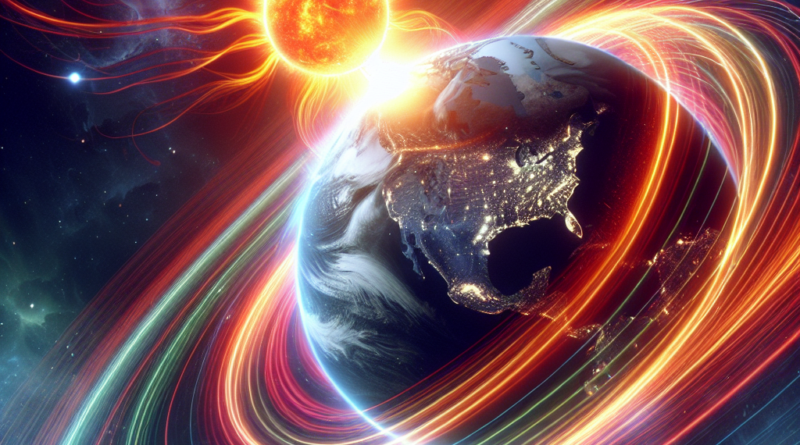The Latest Solar Storms and Earth’s Shifting Magnetic Field: What’s Happening?
Geomagnetic Storms and their Effects on Earth
This summer, Earth was rocked by powerful geomagnetic storms that captured the attention of scientists and the public alike.
These events not only produced spectacular auroras but also had deeper implications.
Geomagnetic storms occur when the Sun releases bursts of energy that expel charged particles into space.
When these particles reach Earth, they interact with our magnetic field, causing visible reactions such as the famous “auroras borealis.”
Recently, particles emitted from a solar flare reached Earth with such energy that they caused visible auroras in various parts of the world.
However, more concern arose when significant disruptions in Earth’s magnetic field were detected by the Ocean Networks Canada (ONC).
Situated 2.7 kilometers deep off the Canadian coast, these instruments indicated the intensity of the solar flare and its impact on our planet.
Kate Moran, president of the ONC, highlighted how the effects of solar storms can penetrate deeply into our environment.
The Consequences of Geomagnetic Storms on Earth
Auroras borealis, which adorned the skies of polar regions, result from charged particles from the Sun interacting with Earth’s magnetic field.
While magnetic storms can cause these beautiful auroras, they can also lead to significant disturbances in Earth’s magnetic field.
The repercussions of these storms can also be felt in the oceanic realm, as reported by underwater observatories of the ONC.
Twenty years ago, a similar event occurred when scientists observed particles emitted from a solar flare capable of reaching Earth and generating a visible aurora borealis even in Hungary.
The interesting discovery was that these particles caused significant disturbances in Earth’s magnetic field, also detected by underwater instruments.
According to Kate Moran, president and CEO of the ONC, the intensity of the solar flare was such that it influenced Earth’s magnetic field.
The data collected from these underwater observations can be valuable in understanding the impact of such events on our planet and in formulating prediction and mitigation strategies.
What’s Next? Experts’ Focus on Future Technological Disruptions
But what will happen next? According to physicist Justin Albert from the University of Victoria, the Sun will reach the peak of its solar cycle in the next two years, leading to an increase in solar eruptions and geomagnetic storms.
What will be the consequences for life on Earth, including effects on satellite communications, power grids, and navigation systems?
We know that solar storms can have significant impacts on technological infrastructures and communication networks.
Forecasts suggest that powerful solar storms could significantly disrupt communication satellites and even damage the Hubble Space Telescope, as has happened in the past.
According to Jonathan McDowell from the Harvard-Smithsonian Center for Astrophysics, powerful solar eruptions will continue until 2025, with an increasing number of sunspots appearing on the Sun’s surface.
This could lead to higher geomagnetic activity and an increased risk of technological disruptions on Earth.




